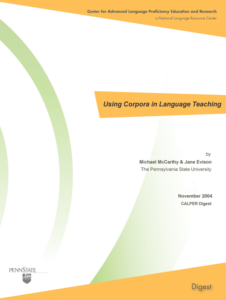Assessment of Advanced Language Proficiency: Why Performance-based Tasks?
CALPER Professional Development Document CPDD 0605
In this document, Shohamy and Inbar argue for the use of performance-based tasks in the assessment of advanced language proficiency. In this effort, they start by exploring the ‘content/language continuum in language teaching programs’ (p. 1) and by discussing performance tasks. They also address issues regarding the designing and scoring of performance-based tasks, including rubrics. The document ends with examples of integrated content and language performance tasks, as well as guidelines for designing a performance task and a sample task.
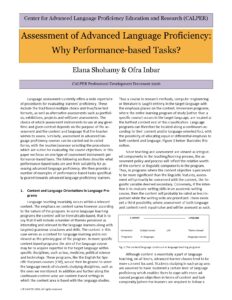
Publication Units:
Assessment of Advanced Language Proficiency-Why Performance-based Tasks?
Publication Files:
Dynamic Assessment in the Language Classroom
CALPER Professional Development Document (CPDD 0411)
In very clear language, the authors provide a basic account of Dynamic Assessment (DA) and trace its origins to Vygotsky’s theory of development. They explain the concepts of mediation and Zone of Proximal Development (ZPD), as well as the two main approaches used in DA. They also include three examples detailing what DA looks like in the classroom and conclude the document by providing a glimpse of what the future holds for DA, such as using it with groups and integrating computer technologies to DA procedures.
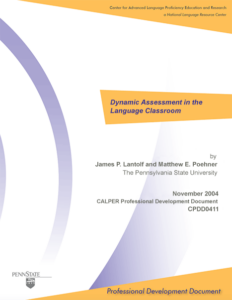
Publication Units:
Dynamic Assessment in the Language Classroom
Publication Files:
Listening Comprehension in Foreign Language Instruction
CALPER Professional Development Document CPDD 0810
This document addresses a range of theoretical and practical issues concerned with the teaching of listening comprehension. It provides an overview of the processes involved in listening comprehension and reviews its most prominent models. In addition, this document presents an alternative model of L2 listening comprehension and examines three major approaches to listening comprehension. Finally, it discusses how teachers can make sound pedagogical choices on how to teach and assess students’ listening comprehension skills.
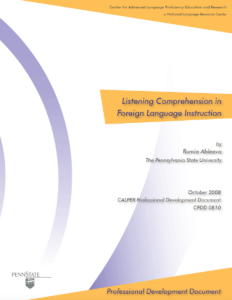
Publication Units:
Listening Comprehension in Foreign Language Instruction
Publication Files:
The Language Assessment Process: A “Multiplism” Perspective
CALPER Professional Development Document CPDD 0603
The authors describe the ‘language assessment process’ and emphasize its ‘multiple’ components and phases and the decisions a teacher has to make at each phase. They then discuss the multiple purposes of assessment, possible language assessment tools, multiple assessment methods and ways of administering assessment, multiple ways of designing items and tasks, multiple criteria for determining the quality of assessment procedures, and multiple ways of interpreting and reporting results.
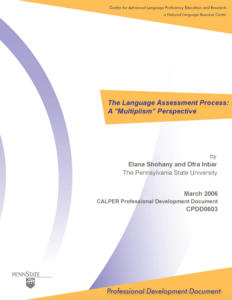
Publication Units:
The Language Assessment Process: A “Multiplism” Perspective
Publication Files:
Using a Corpus in Language Teaching
CALPER Professional Development Document CPDD 0410
In this document, Michael McCarthy describes what a corpus (plural: corpora) is and which kinds of questions it can help answer. He also explains how frequency lists and collocations generated from a corpus constitute powerful analytical tools for those researching language and language teaching. McCarthy concludes by offering practical applications of corpus in language teaching and his thoughts on the future directions for corpus linguistics.
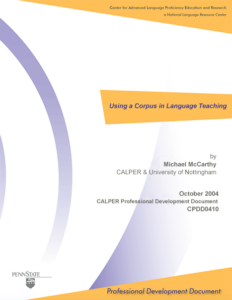
Publication Units:
Using a Corpus in Language Teaching
Publication Files:
Using Corpora in Language Teaching
CALPER Digest
This digest, in addition to defining a corpus (plural: corpora) and briefly describing different types of corpora (e.g., very large, medium-sized, parallel), focuses on learner corpora. The authors emphasize that frequency lists and concordances can help answer questions about why certain patterns of language use happen the way they do. The digest also includes a brief section on data-driven learning (DDL), which is the use and exploration of corpora by students themselves for their own language learning needs.
